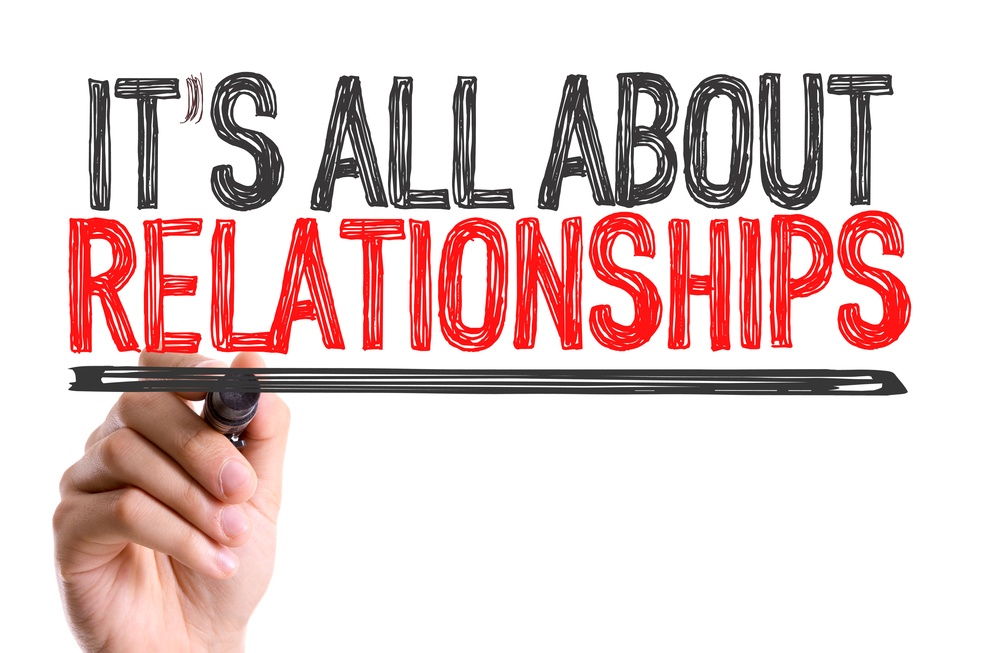How to Improve Your Supplier Relationship Management...
Having a strong relationship with suppliers is one of the best things that any company can do. With all of the changes going on in the transportation...
4 min read
 John Albright
:
Aug 22, 2016 10:22:45 AM
John Albright
:
Aug 22, 2016 10:22:45 AM

Buying and Supplying. It's a fundamental of economics, and it all comes down to supply and demand. This much is obvious, but what may not be obvious is the importance of the relationship between buyer and supplier. Today we'll be discussing the importance of a good working relationship between buyer and supplier, as well as some tips on how develop and maintain that relationship.
The relationship between buyer and supplier can be a constant tug-of-war by both sides. The supplier complains that the buyer gives short notice on orders. The buyer complains that the supplier doesn't deliver the orders on time or the quality of the product is not to par. Each side points the proverbial finger at the other, which can cause tension and bad blood between the two. The truth is that both sides need each other. It's a symbiotic relationship.
Here are some of the challenges a company might face when attempting to keep things copacetic and some tips on how to improve interactions between buyer and supplier.
This issue seems to be the most glaring when it comes to invoicing and payments. The buyer wants to stretch out payments to pad their cash flow. The bigger the buyer is, the more likely they are to have leverage over their small suppliers. The supplier, on the other hand, wants to get their payment as soon as possible, sometimes even offering discounts to buyers if they make their payments earlier. 
Buyers complain about suppliers not sending them detailed invoices and the timeliness of the invoices. Often times Suppliers also complain about the timeliness of payments of buyers. The situation gets worse when the supplier is unable to track their receivables.
The best way to overcome this issue is to communicate.
Communication can be in terms of technology. There are currently technological advances that allow all purchase orders and invoices to be sent and received electronically by syncing systems between buyers and suppliers.
Communication can also be improved verbally and written on the front-end by addressing some key questions for either side. For example, How is invoicing and payment going to be handled? What makes sense for the accounting departments on both sides?
"Many suppliers, especially in today’s uncertain global economy, desperately need the cash but can’t afford to knock too much off the bill in order to get their hands on it quickly. That’s where an intermediary can step in to help. A financial institution – whether a bank or the new crop of non-bank funding entities – can inject additional working capital into the financial supply chains of buyers and suppliers. It can pay the supplier early, then recoup the funds from the buyer under the original payment terms." - Robert J. Bowman, Supply Chain Brain.com
Why Supply Chains Can Follow the Goods, But Not the Money
This can become a point of friction for the supplier and buyer. The Buyer complains of the Supplier delaying the shipment of products and not always being truthful about the delivery of products. The Supplier complains about the buyer not giving them enough notice with their purchase orders. They need the product now! This is what we call "hot parts."
There are three ways to over come this challenge:
1) Technology - Technology can improve the visibility of the supply chain. Each side can know where exactly the product is. When this information is shared, it can make the planning process easier. The Buyer / Planners are able to predict lead times better and make accurate order counts.
information is shared, it can make the planning process easier. The Buyer / Planners are able to predict lead times better and make accurate order counts.
2) Third-Party Manager - A third party can be brought in to manage the relationship. This third party manages the flow of purchasing, receiving, and warehousing of product. Doing this can improve the relationship between the supplier and buyer. You have someone who is unbiased about the situation to handle this the process.
3) Hire a manager internally to manage this part of your operations.
The quality and accuracy of shipments is sometimes a complaint of buyers. It can be a point of frustration. Imagine you are a buyer in the US who is purchasing from a supplier located in China. It's going to take 25 - 35 days for the product to be delivered to your facilities. Imagine if you finally get the order and you are missing product and some of it damaged. Now you have to return and get a new order. It has taken you 2 1/2 - 3 months to get your supplies. You're livid.
Okay, let's avoid this frustration with a couple of tips:
1) Third - Party Manager - Like the Shipment and Delivery dilemma, a third party can be brought in to smooth this out. It requires the examination of the product and packaging. The luxury of using a third party is that there is a buffer zone between delivery of product and not finding out that the product is bad until it gets to the line. The third party has eyes on the shipments as they come in, and it observes, documents, and sends the shipment back if the product is not satisfactory.
2) Quality Agreement & Plan - Set up an agreed upon and bonding quality standard. Both Buyer and Supplier can hold each other accountable on this. It cuts down confusion and improves communication because each side knows the expectations. Best of all, you know what your plan of attack is if an issue occurs.
3) Hire - Hire a dedicated logistics professional who monitors the quality and accuracy of orders. Quality and accuracy of orders is important. These two criteria could have the ability to shut down your lines and hurt your production. We all know what the cardinal rule is for all manufacturing: At all costs, DO NOT SHUT DOWN THE PRODUCTION LINES.
 Like any other proactive action in business, you have to monitor performance and trends in order to make smart decisions about the direction of your operations. When it comes to Buyer-Supplier relations, this can mean quarterly review meetings. You can discuss the performance of all of the previous mentioned challenges. This is a good place to start.
Like any other proactive action in business, you have to monitor performance and trends in order to make smart decisions about the direction of your operations. When it comes to Buyer-Supplier relations, this can mean quarterly review meetings. You can discuss the performance of all of the previous mentioned challenges. This is a good place to start.
Pose these questions:
How are we doing on this during the last quarter? You should also discuss what is to be expected during the next quarter.
Are there anything big obstacles to expect?
Should we anticipate a spike in production based upon demand?
Is the cost of production increasing due to an increase in supplies?
If you follow our advice, you should be on the right track to improving the relationship between buyer and supplier. There is also an option to hire someone else to handle this part of your business. (Intentional and timely clearing of the throat) 

Having a strong relationship with suppliers is one of the best things that any company can do. With all of the changes going on in the transportation...

Before technological innovations made the world a global village, supplier relationship management followed a pretty straight forward strategy:...

More and more companies are aware that they must now integrate and collaborate with suppliers to remain competitive in changing industries and...